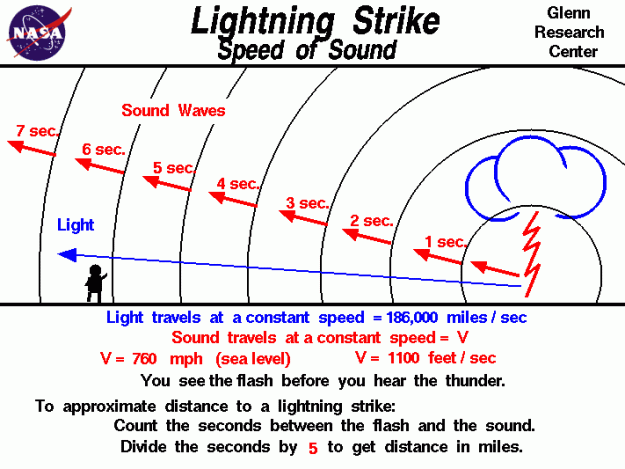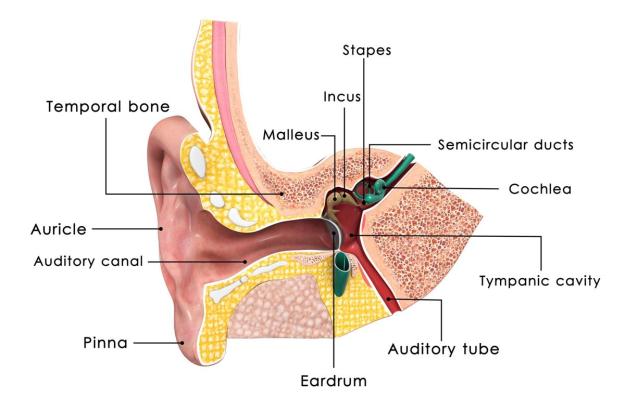Another human sensation that plays a crucial role in our life is hearing. Now let’s take a closer look at the human hearing system and how auditory information is processed throughout.
What is the sound?
First, similar to light, sounds are also waves that have different wavelength and amplitude. Such difference creates sensational pitches and loudness that we use to describe the sound.
Therefore, our ears are responsible for collecting those waves from the environment and code them into a language that our brain can read and reacts to. Our physiology is featured to code and deliver the auditory signals to the brain in such a short time that it takes approximately the same amount of time for our brains to “understand” the outside environment visually and auditorily once those waves reach our eyes/ears.

But, there is a huge difference between the traveling speed of light (about 3*10^(8) m/s) and that of sound (343 m/s). Interesting phenomena form due to this difference, and thunder/lightning is one of them. While a clap of thunder and the corresponding lightning form almost at the same time, they reach us at different speeds hence at different moments. We usually see the lightning first and then hear the thunder because we are quite distant from where they are formed (presumably where the storms store their charges), and such distance allows the faster lightning reach us before the sound of the thunder.
How exactly do we hear?
Now you may ask, how could our ears take in waves from the environment and interpret it? As a matter of facts, ears have physiologically complicated structures that are capable of modifying the outside waves to satisfy our picky brains that are quite strict with the compositive auditory information coming in.
There are three main areas of each ear: the outer ear, the middle ear, and the inner ear. Each area has its own tasks, and together they make a production line that translates a broad range of sound voices to evident neuro signals for our brains to process.
The outer ear is made up of two parts: the pinna and the ear canal. Human pinnae refer to the curvy shaped structure that we can see on our faces. Fun fact: only mammals are found to have pinna-like structures. Even though our pinnae are more or less different from one another, they are shaped to better collect the sound waves in the environment from different directions. Also, such structure helps with the localization of the sources of sound waves collected. Those waves then go through the 25 mm ear canal that allows waves to bounce up and down to protect the eardrum located at the end of the ear canal.
The middle ear started from the eardrum (tympanic membrane), a thin layer of membrane that vibrates in response to the change in air pressure of the sound waves. In contact with the tympanic membrane are three tiny bone structures called ossicles. The tympanic membrane is touching the malleus, and then the incus and the stapes. The three ossicles function to amplify the sound vibration (to be delivered to the inner ear) via the lever-like line-up and shrinking the impacted surface area. The energy that has been enhanced by the three “levers” then will be funneled to the inner ear. Such an amplification process is essential as the inner ear is filled with fluids, and it takes more energy for the incoming sound waves to move the fluids and the air. In chaotic environments, the two muscles, the tensor tympani and the stapedius, in the middle ear tense to restrain the intensive movement of the ossicles. So that’s why people hardly become deaf owing to abrupt loud noises.
Here is an excellent video explaining the anatomy of the middle ear and the ossicles.

The Middle Ear
In the next blog, we will continue exploring the delicate structure of the inner ear, how it translates frequency signals to neuro signals, and how those signals are delivered and decoded by the brain areas that are responsible for the sound-analysis.
